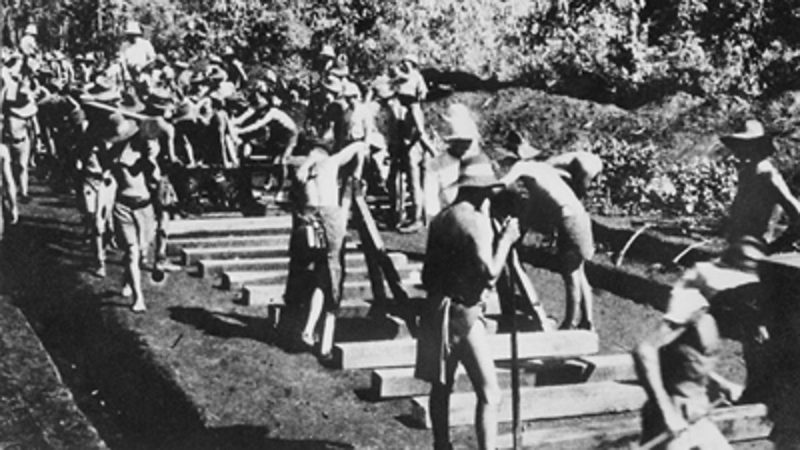Frank Kerridge, a former infantryman in the British Army during World War II, turned 100 on March 29th. This centenarian was captured during the war and forced to work on the infamous Burma Railway, the inspiration behind the 1957 movie The Bridge on the River Kwai.
Kerridge was fighting to save the British fortress of Singapore with the fifth battalion of the Suffolk Regiment when the Japanese conquered it in 1942. Following his capture, he worked for two years on the 258-mile stretch of track linking Burma and Thailand. This was known as the Death Railway. Kerridge survived where more than 12,000 Allied soldiers, including almost 7,000 British soldiers, died either from disease, exhaustion or at the hands of their Japanese captors.
He recalled being whipped with a bamboo cane by a Japanese guard. Kerridge said: “You had to watch your Ps and Qs – they were very strict. That’s how they were. If you did anything wrong you would get a good hiding.
“We were taking a tent up at the railway,” he said of the event, “it held about 12 people and they told us to put it up. The first thing I did was make sure I got a bed, but it was for the Japs.
“I was very lucky just to get the one bamboo strike compared to what some poor fellows got,” he said.
Aside from their captors, conditions for the men on the Railway were miserable. “The bugs bit you and I had one or two ulcers,” Kerridge recalled. “Some of the men lost legs through it, with doctors being forced to cut off legs with hacksaws.” He added: “We hardly had any clothes, most of the time we were barefoot. We camped in bamboo huts. In the monsoons, we used to hold on to the middle pole so it wouldn’t blow away.”
Kerridge also remembered happier times as well, such as the concerts that the men were allowed to put on, including songs from popular contemporary musicals. After his time on the Railway, Kerridge was sent with 400 other men to Japan. “They were making carbons like you have in batteries,” he said. “Some weighed over a tonne. Life was better in Japan than on the Railway.”
His parents, Frank and Bessie, and his wife, Madeline, knew nothing of his whereabouts until he was freed at the end of the war in 1945.

At that time, Kerridge was taken by train through Hiroshima. “The blinds were down on the train and we were told not to look,” he said. “But we thought that this was something more than an ordinary bomb attack,” he said. Kerridge was sent back to England and reunited with his wife, whom he met after winning a coconut at a fair in his hometown of Stowmarket at the age of 17. They had married in 1939.
Over 70 years later, Kerridge is still fit and leads an active life. He tends his garden, donates his vegetables to the neighbors, enjoys baking, and still drives. He insists that there is no secret to long life other than a warm mug of milk with a drop of rum every night. He says, “I don’t feel 100. You just get on with it.”
A special celebration was organized for Kerridge on the day before his birthday. Around 60 guests attended the party at Stowmarket’s Cedars Hotel. His younger sister Bessie is 98 and lives in Great Baddow, Essex. She managed to make it to the party. “I’d really like to see her make 100 now,” Mr. Kerridge said.
Elmswell-born Kerridge has lived in his home for 53 years. He shares it with his cat, Spooky.He was married to his wife Madeline for 71 years until her passing in 2010. Although the couple was unable to have children, he is a great-great-uncle and seen as a father figure to many.
Rosemary Tyler, 65, has known Kerridge all her life. She said, “I sometimes thought I had two sets of parents. He’s had quite an influence on me in some way. They would have been incredible parents.”
